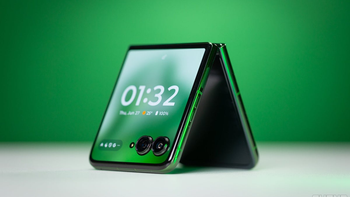Apple introduces the new chipset that will power the 5G iPhone 12 series

Apple today announced that the fourth-generation Apple iPad Air is the first consumer product ever to be powered by a 5nm chipset, the A14 Bionic. The latter will be manufactured by TSMC using its 5nm process node. That means that the number of transistors in the chip will number 11.8 billion, close to 40% more than the 8.5 billion inside the A13 Bionic. The larger the number of transistors inside a chip, the more powerful and energy efficient it is.
You might also like to read:
- iPhone 13: price, release date, features, and specs
The A14 Bionic features an update to the chip's six-core CPU which includes two high-performance cores for complex tasks and four high-efficiency cores for general housekeeping. The bottom line is a 40% improvement in CPU performance compared to the previous iPad Air, which was powered by the 7nm A12 Bionic. That chipset was equipped with 6.9 billion transistors. The A14 also includes Apple's latest four-core GPU which delivers maximum performance while using the lowest possible amount of power. The new GPU provides iPad Air users with a 30% faster graphics performance.

The new iPhone 12 series will be powered by the 5nm A14 Bionic
Apple points out that with the A14 Bionic, the new iPad Air has up to two times faster graphics performance compared to the best-selling laptop in the tablet's price range. This means that the fourth-gen iPad Air can handle complex games, 4K videos, and more with aplomb. Additionally, the A14 Bionic features more technology including a neural engine for Machine Learning. The faster neural engine on the chipset has a 16 core architecture. That is double the number of neural engine cores found on the A13 Bionic. And the 5nm A14 Bionic is expected to power all 2020 iPhone 12 models as well. This will make the upcoming iOS handsets the first phones to be powered by a 5nm chipset. The potential savings in energy consumption is believed to be one reason why Apple might feel comfortable cutting the battery capacities on the new handsets despite having to support 5G connectivity.
Squeezing more transistors inside an integrated circuit is a job that never ends and TSMC is expected to begin risk production of 3nm chips next year. But it will still be two to three years afterward before we start talking about Apple using a 3nm chipset to power its devices. For now, we can only sit back and marvel at the speed and energy savings of the first 5nm chipset, the A14 Bionic.















Things that are NOT allowed: